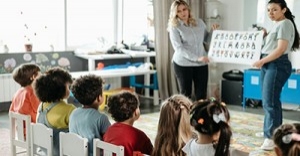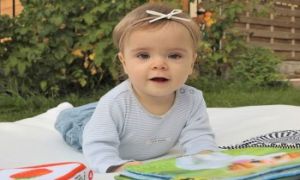Child wellbeing. It’s a phrase we use daily—but how often do we pause to ask, what does it actually mean here, in this room, for this child? Early childhood settings are shaped by diverse pedagogies, cultural frameworks, and personal experiences. Without a shared definition of well-being, services risk operating on fragmented interpretations—leaving educators navigating blurred expectations and inconsistent approaches to safeguarding, planning, and inclusion.
This is where The Nest Wellbeing Framework, co-created by ARACY and Emerging Minds, offers clarity. Through its six interrelated domains—being loved and safe, having material basics, being healthy, learning, participating, and having a positive sense of identity—The Nest invites teams to articulate what wellbeing looks like in practice. Not just for children, but in the relational ecosystem that surrounds them.
The accompanying 4-minute explainer video is more than a training tool; it’s an invitation to align. To move from vague buzzwords to actionable reflection. From siloed definitions to collaborative culture-building.
Why It Matters:
- Safeguarding clarity: With shared language, educators can better identify when a child’s wellbeing is compromised—and respond with unified safeguards.
- Trauma-informed planning: Understanding wellbeing as multidimensional allows teams to design environments that buffer trauma and bolster protective factors.
- Professional agency: Educators are empowered to speak about wellbeing not just emotionally, but analytically—linking practice to frameworks, rights-based approaches, and sector expectations.
- Policy alignment: Leaders can embed The Nest into their QIP, planning cycle, induction packs, and reflective practice templates to meet NQS and EYLF goals.
Where to Start:
- Watch the explainer video: The Nest – Child Wellbeing Framework
- Explore The Nest domains via ARACY: Framework Overview
- Use prompts like:
- “Which wellbeing domains are consistently supported in our service?”
- “Where might gaps be showing up—in documentation, dialogue, or decisions?”
- “How do families interpret wellbeing, and how do we reflect that?”
Mapping Practice to The Nest Domains
| Domain | What to Look For in Practice | Mapping Strategies |
|---|---|---|
| Loved & Safe | Trusting relationships, safeguarding protocols, emotional safety | - Audit supervision and key person systems - Review incident responses and child voice |
| Material Basics | Access to food, clothing, shelter, and resources | - Check enrolment equity and fee structures- Map support pathways for vulnerable families |
| Healthy | Physical and mental health, nutrition, sleep, movement | - Review health policies and daily routines- Track wellbeing indicators in documentation |
| Learning | Cognitive stimulation, curiosity, access to play and exploration | - Align planning cycle with EYLF outcomes- Use child-led inquiry mapping tools |
| Participating | Agency, decision-making, inclusion in service culture | - Map opportunities for child voice- Audit family engagement and feedback loops |
| Positive Identity & Culture | Cultural safety, pride, belonging, identity affirmation | - Review cultural inclusivity in curriculum - Map representation in resources and displays |
Practical Tools to Support Mapping
- Visual Mapping Templates: Create posters or digital dashboards that show how each domain is supported across routines, environments, and documentation.
- Staff Reflection Sheets: Use prompts like “Where do we see this domain in action?” and “Where might it be missing?”
- Family Feedback Integration: Include wellbeing domains in surveys or conversation starters to align service language with family perspectives.
- QIP Alignment: Embed domain mapping into your Quality Improvement Plan to track progress and set goals.
- Spotlight Documentation: Trial child profiles that highlight how each domain is reflected in their experience and relationships.
Prompts To Guide Educators
Team Reflection & PD Sessions
- “Which Nest domain do we instinctively focus on—and which ones get overlooked?”
- “How do our routines and environments reflect each domain?”
- “What assumptions do we hold about wellbeing, and where do they come from?”
- “How do we respond when a child’s wellbeing is compromised—do we have a shared language for that?”
Child-Centered Planning
- “How does this planned experience support one or more Nest domains?”
- “Can we trace a child’s journey across the six domains over time?”
- “What does ‘participation’ look like for non-verbal or neurodivergent children in our setting?”
Family Engagement
- “How do families define wellbeing—and how do we reflect that in our practice?”
- “Are families aware of The Nest domains? Could we co-create a visual version together?”
- “What feedback have families given that aligns with or challenges our understanding of wellbeing?”
Documentation & Compliance
- “Do our observations and reflections capture wellbeing holistically—or just learning outcomes?”
- “How can we use The Nest to strengthen our QIP goals or EYLF alignment?”
- “Are our safeguarding policies mapped to the ‘Loved & Safe’ domain?”
Service Culture & Leadership
- “How do we model wellbeing for each other as educators?”
- “Which Nest domains are visible in our induction, supervision, and mentoring practices?”
- “What would it look like to embed The Nest into our service philosophy or vision statement?”
Further Reading
EYLF Outcome 3 - Children Have A Strong Sense Of Wellbeing V2.0
Activity Ideas To Promote EYLF Outcome 3
Understanding EYLF Outcome 3
More information: The Nest—Child Wellbeing Framework and Framework Overview







 As an Educator in Australia, your pay rate falls under the Children’s Services Award 2010. This award states the minimum amount that an employer can
As an Educator in Australia, your pay rate falls under the Children’s Services Award 2010. This award states the minimum amount that an employer can When working as a qualified Early Childhood Teacher (with a university degree) within a service, your rate of pay will come from the Educational Services
When working as a qualified Early Childhood Teacher (with a university degree) within a service, your rate of pay will come from the Educational Services When working as a Diploma Qualified Educator your pay rate is from the Children's Services Award 2010. This Award states your minimum rate of pay
When working as a Diploma Qualified Educator your pay rate is from the Children's Services Award 2010. This Award states your minimum rate of pay When working as a Cert 3 Qualified Educator, your pay rate is from the Children's Services Award 2010. This Award states your minimum rate of
When working as a Cert 3 Qualified Educator, your pay rate is from the Children's Services Award 2010. This Award states your minimum rate of Educational Leaders play a crucial role in their early childhood service by ensuring that the educational program aligns with best practices and supports the holistic
Educational Leaders play a crucial role in their early childhood service by ensuring that the educational program aligns with best practices and supports the holistic In early childhood education and care, ratios are more than a technicality—they are a frontline safeguard. Every child deserves responsive supervision, emotional connection, and developmental
In early childhood education and care, ratios are more than a technicality—they are a frontline safeguard. Every child deserves responsive supervision, emotional connection, and developmental With the new national child safety reforms kicking in on 1 September 2025, early childhood services like yours have a real opportunity to lead the
With the new national child safety reforms kicking in on 1 September 2025, early childhood services like yours have a real opportunity to lead the Here’s a comprehensive Mobile Phone and Smart Watch Policy tailored for early childhood education and care (ECEC) services in Australia, aligned with the latest 2025
Here’s a comprehensive Mobile Phone and Smart Watch Policy tailored for early childhood education and care (ECEC) services in Australia, aligned with the latest 2025 The Sea of Fish Challenge is a national initiative that invites children, educators, families, and communities to create and display fish artworks as a symbol
The Sea of Fish Challenge is a national initiative that invites children, educators, families, and communities to create and display fish artworks as a symbol Across the early childhood education and care sector, educators are sounding the alarm: current staffing ratios are insufficient to deliver safe, meaningful, and developmentally appropriate
Across the early childhood education and care sector, educators are sounding the alarm: current staffing ratios are insufficient to deliver safe, meaningful, and developmentally appropriate


